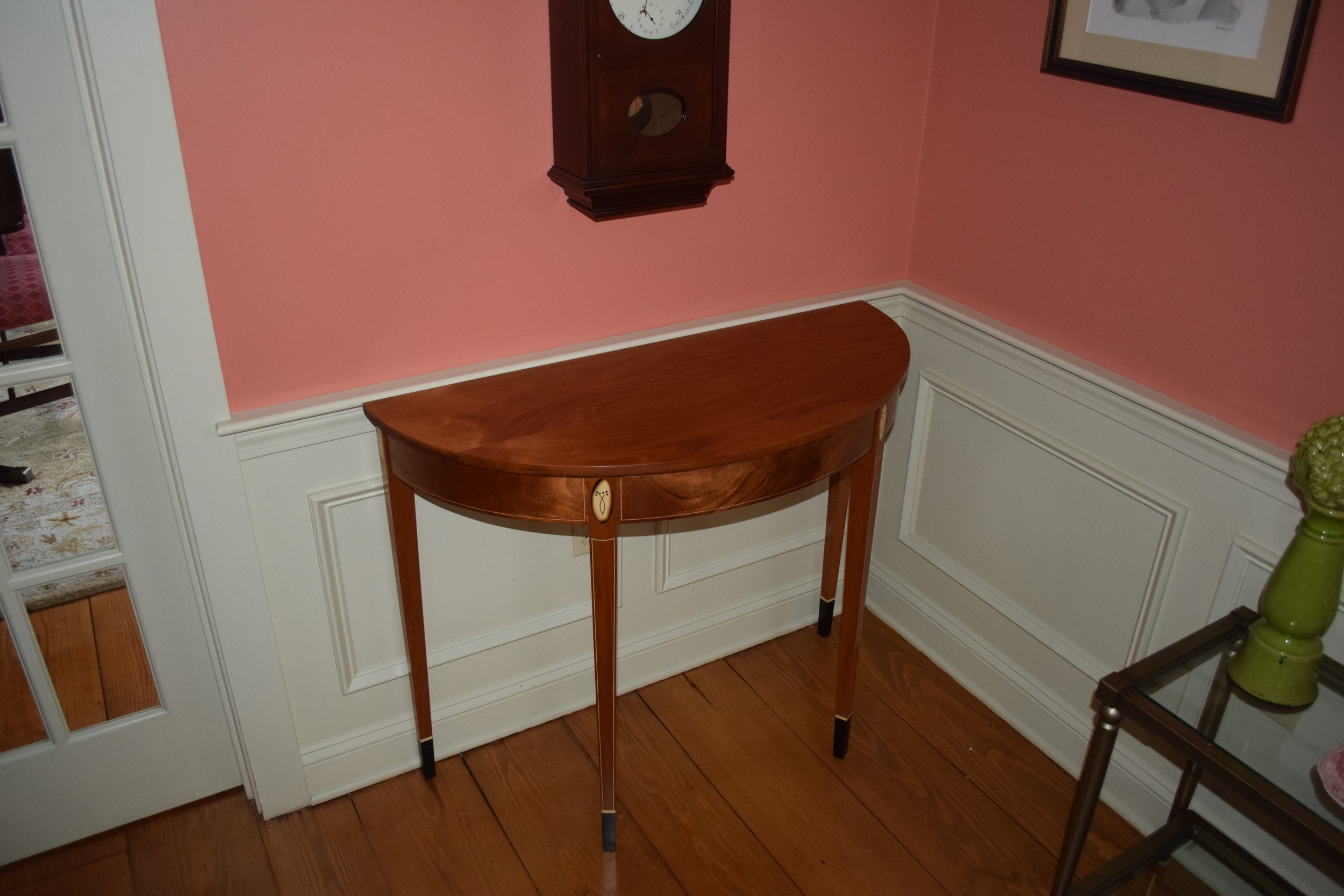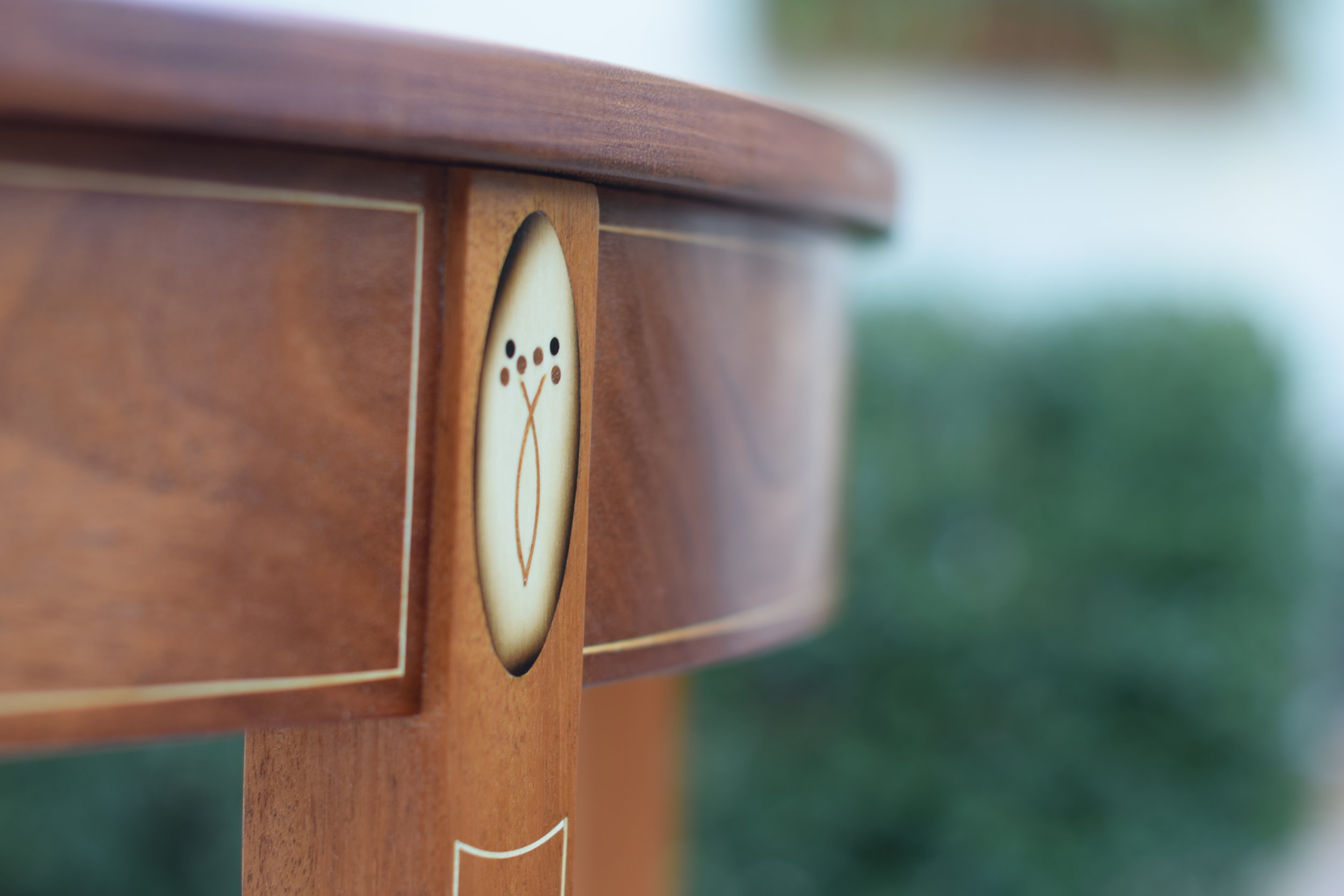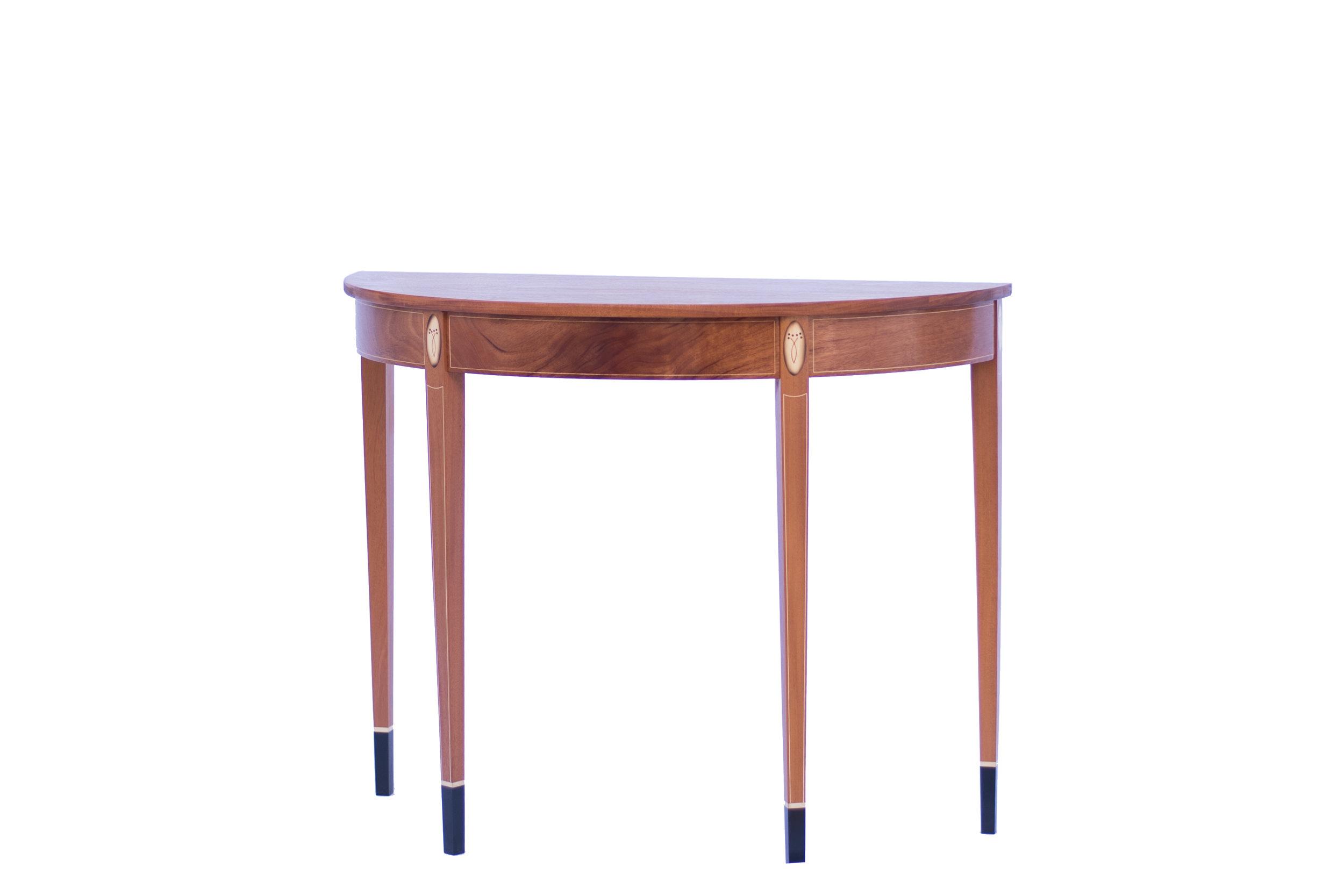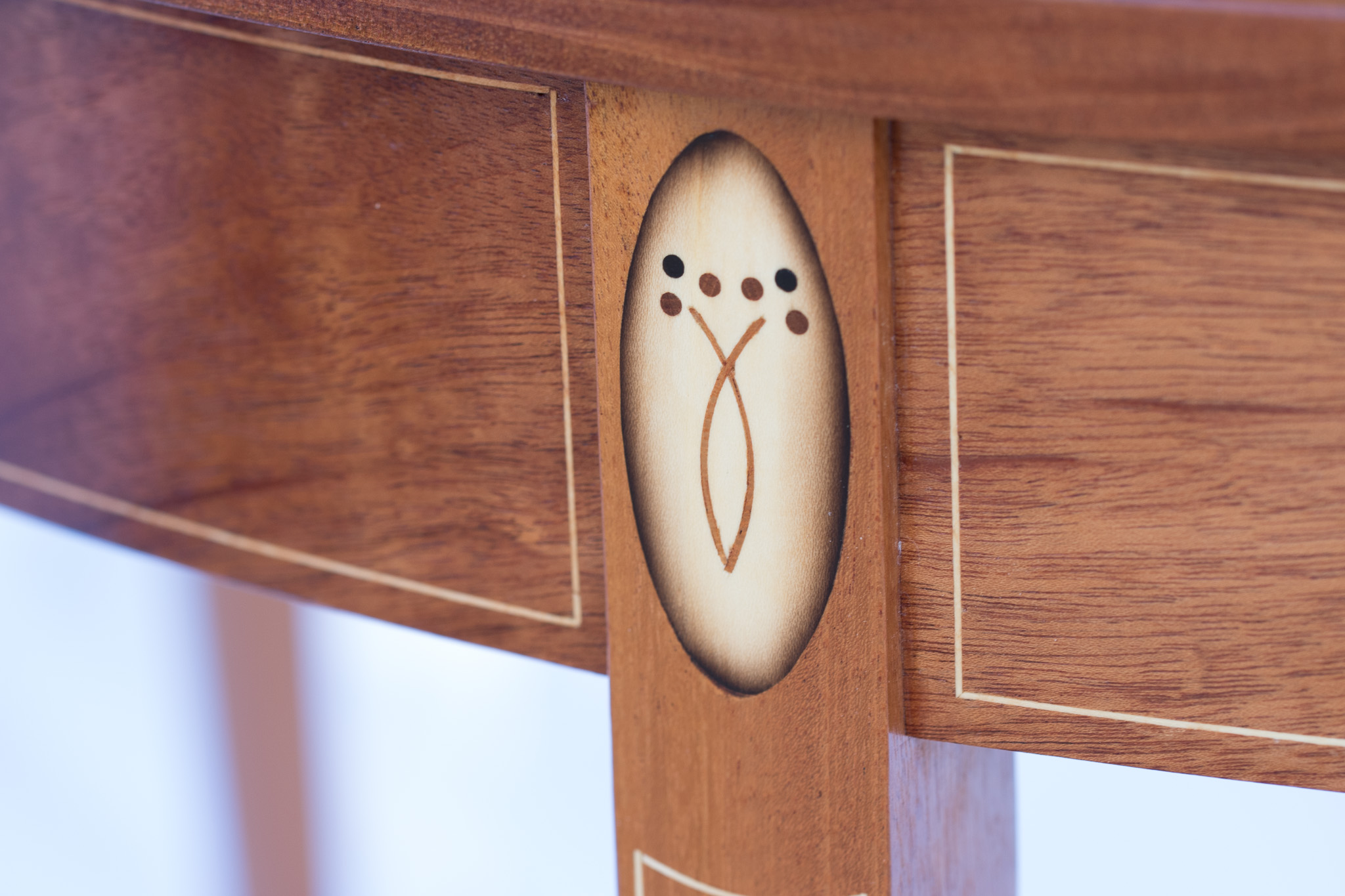Demilune Table





Reproduction of a Federal style demilune table, popularized in the late 18th and early 19th century. Primarily mahogany, with ebony feet, and various holly, ebony, and mahogany inlays. The name “demilune” (French: “half moon”) refers to the shape of the table, a form achieved by a technique called bent lamination, where thin strips of wood are bent around a bending form and locked in place with glue. The front legs join the apron via bridle joints, and the rear legs join the front and rear apron via mortise and tenon joints. What sets this piece apart are the inlays: holly stringing on the aprons and legs, and holly, mahogany, and ebony “line and berry” designs on the face of each leg. The stringing and line and berry inlays are achieved by hand using specialized tools. The shadow effect on the oval holly inlays is created using a technique called sand shading. The table was finished with shellac and wax.
